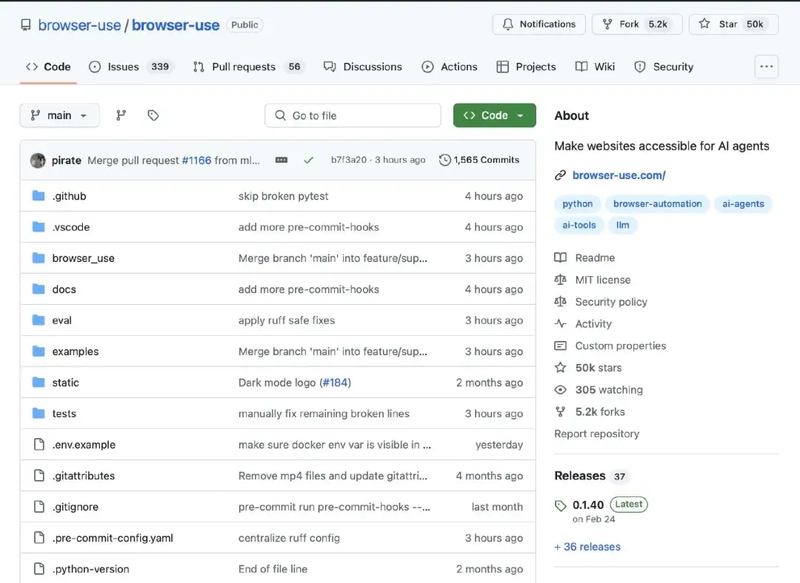Migrate from Thinkific to WordPress. #4 Reviews import
In the previous article, the third part of this 5-article series, I described the implementation of the WP-CLI command to import the progress of courses for users. In part four, I will describe the functionality of the WP-CLI command to import reviews given by users to the courses. Below, I also provide you with the list of articles in the series: Table of contents: Part 1: Planning and data preparation Part 2: Users import Part 3: Progress import Part 4: Reviews import Part 5: Other adaptations and conclusions Declaring the review import method I start again by declaring the method and the helper variables for reading from the file: // class-wpcli.php public function import_reviews(): void { global $wp_filesystem, $wpdb; include_once ABSPATH . 'wp-admin/includes/file.php'; WP_Filesystem(); $files = array( 'course-1-reviews.json', 'course-2-reviews.json', 'course-3-reviews', 'course-4-reviews.json' ); //... } I also declared a variable of type array with the list of files containing reviews for courses, which I will iterate through using foreach ($files as $file). Reading from file JSON file structure I'm putting here again the structure of the review file in JSON format: // course-*-reviews.json { "@context": "http://schema.org", "@type": "Product", "name": "", "aggregateRating": { "@type": "AggregateRating", "ratingValue": "4.6", "reviewCount": 5 }, "review": [ { "@type": "Review", "author": { "@type": "Person", "name": "" }, "description": "", "name": "", "date": "November 26, 2021", "reviewRating": { "@type": "Rating", "bestRating": 5, "ratingValue": 5, "worstRating": 0 } }, // ... ], "image": "" } As in the previous articles, reading from files is done in a similar way, but this time I won't use the helper method parse_csv_content to compose the vector with lines from the CSV file. Instead, I will use the json_decode function to interpret the JSON code: // class-wpcli.php $file_path = plugin_dir_path( __FILE__ ) . '/data/reviews/' . $file; $file_content = $wp_filesystem->get_contents( $file_path ); $json = json_decode( $file_content ); $course_name = $json->name; $review_count = count( $json->review ); $course = get_page_by_title( $course_name, OBJECT, 'courses' ); I also declared a few more variables that will be useful later on. I made sure that the course names in the review files in the name field match the names of the courses created in Tutor LMS. Processing reviews I then started looping through the reviews in the review array in the JSON and proceeded like this: // class-wpcli.php foreach ( $json->review as $review ) { $user_id = $this->search_user_by_name( $review->author->name ); $new_comment = wp_insert_comment( array( 'comment_post_ID' => $course->ID, 'comment_author' => $review->author->name, 'comment_date' => gmdate( 'Y-m-d H:i:s', strtotime( $review->date ) ), 'comment_content' => $review->description, 'comment_agent' => 'TutorLMSPlugin', 'comment_type' => 'tutor_course_rating', 'comment_approved' => 'approved', 'user_id' => $user_id, 'comment_meta' => array( 'tutor_rating' => $review->reviewRating->ratingValue ), // phpcs:ignore WordPress.NamingConventions.ValidVariableName.UsedPropertyNotSnakeCase ) ); if ( is_wp_error( $new_comment ) ) { \WP_CLI::warning( sprintf( 'Review of "%s" for "%s" not imported.', $review->author->name, $course_name ) ); } } I performed a search for the user's name to retrieve their ID from the database using the helper method search_user_by_name, described below. Then, I used the wp_insert_comment function to create the review, to which I passed the necessary values: The ID of the course to which the review belongs The author's name The review date (slightly reformatted) The review content The custom values of the Tutor LMS plugin to categorize the review as one of the Tutor LMS course reviews The user's ID The review rating The method for searching for a user by name and surname is here: // class-wpcli.php protected function search_user_by_name( string $name ): int { $normalized_name = str_replace( ' ', ' ', trim( $name ) ); $names = explode( ' ', $normalized_name ); // line 3️⃣ $last_name = array_pop( $names ); $first_name = implode( ' ', $names ); // line 5️⃣ $wp_user_query = new WP_User_Query( array( 'role' => 'subscriber', 'meta_query' => array( 'relation' => 'AND', array( 'key' => 'first_name', 'value' => $first_name, 'compare' => '=', ), array( 'key'

In the previous article, the third part of this 5-article series, I described the implementation of the WP-CLI command to import the progress of courses for users.
In part four, I will describe the functionality of the WP-CLI command to import reviews given by users to the courses.
Below, I also provide you with the list of articles in the series:
Table of contents:
Declaring the review import method
I start again by declaring the method and the helper variables for reading from the file:
// class-wpcli.php
public function import_reviews(): void {
global $wp_filesystem, $wpdb;
include_once ABSPATH . 'wp-admin/includes/file.php';
WP_Filesystem();
$files = array( 'course-1-reviews.json', 'course-2-reviews.json', 'course-3-reviews', 'course-4-reviews.json' );
//...
}
I also declared a variable of type array with the list of files containing reviews for courses, which I will iterate through using foreach ($files as $file).
Reading from file
JSON file structure
I'm putting here again the structure of the review file in JSON format:
// course-*-reviews.json
{
"@context": "http://schema.org",
"@type": "Product",
"name": "",
"aggregateRating": { "@type": "AggregateRating", "ratingValue": "4.6", "reviewCount": 5 },
"review": [
{
"@type": "Review",
"author": { "@type": "Person", "name": "" },
"description": "",
"name": "",
"date": "November 26, 2021",
"reviewRating": { "@type": "Rating", "bestRating": 5, "ratingValue": 5, "worstRating": 0 }
},
// ...
],
"image": ""
}
As in the previous articles, reading from files is done in a similar way, but this time I won't use the helper method parse_csv_content to compose the vector with lines from the CSV file.
Instead, I will use the json_decode function to interpret the JSON code:
// class-wpcli.php
$file_path = plugin_dir_path( __FILE__ ) . '/data/reviews/' . $file;
$file_content = $wp_filesystem->get_contents( $file_path );
$json = json_decode( $file_content );
$course_name = $json->name;
$review_count = count( $json->review );
$course = get_page_by_title( $course_name, OBJECT, 'courses' );
I also declared a few more variables that will be useful later on.
I made sure that the course names in the review files in the name field match the names of the courses created in Tutor LMS.
Processing reviews
I then started looping through the reviews in the review array in the JSON and proceeded like this:
// class-wpcli.php
foreach ( $json->review as $review ) {
$user_id = $this->search_user_by_name( $review->author->name );
$new_comment = wp_insert_comment(
array(
'comment_post_ID' => $course->ID,
'comment_author' => $review->author->name,
'comment_date' => gmdate( 'Y-m-d H:i:s', strtotime( $review->date ) ),
'comment_content' => $review->description,
'comment_agent' => 'TutorLMSPlugin',
'comment_type' => 'tutor_course_rating',
'comment_approved' => 'approved',
'user_id' => $user_id,
'comment_meta' => array( 'tutor_rating' => $review->reviewRating->ratingValue ), // phpcs:ignore WordPress.NamingConventions.ValidVariableName.UsedPropertyNotSnakeCase
)
);
if ( is_wp_error( $new_comment ) ) {
\WP_CLI::warning( sprintf( 'Review of "%s" for "%s" not imported.', $review->author->name, $course_name ) );
}
}
I performed a search for the user's name to retrieve their ID from the database using the helper method search_user_by_name, described below. Then, I used the wp_insert_comment function to create the review, to which I passed the necessary values:
- The ID of the course to which the review belongs
- The author's name
- The review date (slightly reformatted)
- The review content
- The custom values of the
Tutor LMSplugin to categorize the review as one of theTutor LMScourse reviews - The user's ID
- The review rating
The method for searching for a user by name and surname is here:
// class-wpcli.php
protected function search_user_by_name( string $name ): int {
$normalized_name = str_replace( ' ', ' ', trim( $name ) );
$names = explode( ' ', $normalized_name ); // line 3️⃣
$last_name = array_pop( $names );
$first_name = implode( ' ', $names ); // line 5️⃣
$wp_user_query = new WP_User_Query(
array(
'role' => 'subscriber',
'meta_query' => array(
'relation' => 'AND',
array(
'key' => 'first_name',
'value' => $first_name,
'compare' => '=',
),
array(
'key' => 'last_name',
'value' => $last_name,
'compare' => '=',
),
),
)
);
$authors = $wp_user_query->get_results();
return $authors[0]->ID;
}
In the initial phase, I performed a small normalization of the name, specifically removing spaces from the ends and replacing double spaces in the name with a single space. I noticed many discrepancies of this kind in the JSON-exported file obtained from Thinkific course pages.
Then (in lines 3-5), I split the name by space to be able to obtain the first and last names, even when the full name consists of 3 names. In this case, I used ChatGPT, resulting in the combination of the explode, array_pop, and implode functions.
Furthermore, I used the WP_User_Query class for the complex query to find the user by their first and last names, and finally, I returned the ID.
Closing thoughts
With the execution of the last WP-CLI command, we now have the reviews added:
$ wp thinkific import reviews
The migration is complete, and in the next article, I will make a few adjustments to the theme, Tutor LMS, and WooCommerce templates."
This article was first published on my blog.









































































































































































![[The AI Show Episode 142]: ChatGPT’s New Image Generator, Studio Ghibli Craze and Backlash, Gemini 2.5, OpenAI Academy, 4o Updates, Vibe Marketing & xAI Acquires X](https://www.marketingaiinstitute.com/hubfs/ep%20142%20cover.png)



























































































































![[DEALS] The Premium Learn to Code Certification Bundle (97% off) & Other Deals Up To 98% Off – Offers End Soon!](https://www.javacodegeeks.com/wp-content/uploads/2012/12/jcg-logo.jpg)


![From drop-out to software architect with Jason Lengstorf [Podcast #167]](https://cdn.hashnode.com/res/hashnode/image/upload/v1743796461357/f3d19cd7-e6f5-4d7c-8bfc-eb974bc8da68.png?#)









































































































.png?#)
































_Christophe_Coat_Alamy.jpg?#)
 (1).webp?#)


































































































![iPhone 17 Pro Won't Feature Two-Toned Back [Gurman]](https://www.iclarified.com/images/news/96944/96944/96944-640.jpg)
![Tariffs Threaten Apple's $999 iPhone Price Point in the U.S. [Gurman]](https://www.iclarified.com/images/news/96943/96943/96943-640.jpg)








































































































































